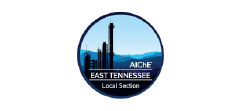All Thursday seminars are given by Gold or Silver Innovation Leaders
Most abstracts and speaker information is provided in the Track information section below this schedule
TRACK 5 – SAFETY, SUSTAINABILITY, MOBILITY, ENVIRONMENT
Click on seminar title below to read the abstract
Sebastian Schulz, Title Product Manager, Product Sustainability
All what we buy and consume was produced. All we produce was mined, extracted, synthetized. All of those operations have a cost: an energy cost, an environmental cost, a carbon footprint. Some 40years ago, the chemical industry saw a regulatory revolution aimed at ensuring the safety of workers and local communities. We are now at the dawn of a new revolution: regulatory development forcing industries to mind the environmental cost of making stuff. Learn how organizations and thought leaders are preparing to face this next revolution.
What attendees will learn
How organizations and thought leaders are preparing to face regulatory development’s next revolution.
Austin Johnson, Product Manager – Low Voltage Assemblies, Eaton
AGC Glass North America recently completed a major expansion of their Church Hill, TN facility to add a new production line that applies specialized coatings for glass. In an effort to support one the company’s guiding principles, “no production without the assurance of safety,” AGC viewed the plant expansion as the perfect opportunity for its engineers to design the safest and most reliable production environment possible. This goal could be achieved by leveraging the industry’s latest innovations in electrical and arc flash safety. After evaluating the arc flash safety solutions available from a variety of vendors, AGC concluded that Eaton’s Arc Quenching Magnum DS low-voltage switchgear best met their safety, reliability and uptime requirements. Arc Quenching Switchgear enabled AGC to bring the switchgear incident energy to below 1.2 calories per centimeter squared and provide arc-resistant safety while protecting the switchgear from arc flash damage, thereby minimizing production downtime in the event of an arc flash.
What attendees will learn:
- Hazard of arc flash
- Comparison of solutions to reduce risk of arc flash
- Incident energy and how to quantify arc flash risk
Eloy Flores, Director of R&D of Chemical Engineering
As industry continues to evolve and pyrolysis continues to move towards large scale commercialization for renewable fuels and chemicals, the need for integration of new designs into current and new infrastructure continues to increase. The ongoing change of feedstocks makes fluidized bed technology a key to the future for the chemical industry. New feedstocks and integration of materials such as plastics and biomass continuously drive the need for research and development to meet new challenges at commercial scales.
Southwest Research Institute has supported our clients with these endeavors using our fluidized bed pilot plant experience over the past 15 years.
This seminar will discuss past and future fluidized bed technologies designed, constructed, and operated at SwRI for solving feed and fuel and chemical product specific challenges.
What attendees will learn:
Attendees will learn about the uses of fluidized bed technology, new fluidized bed technology, about the challenges new feedstocks will present to integration and production, and how SwRI supports industry and academia to overcome these challenges.
Ravindra Jagasia, R.Stahl
What attendees will learn:
How to deploy Ethernet in hazardous areas, right up to the field device level.
Tim Moore, Eaton
On November 30 2018, IEEE published updates to IEEE 1584, IEEE Guide for Performing Arc-Flash Hazard Calculations. The guide provides a new mathematical model to determine arc flash hazard incident energies and boundaries. The new 2018 guide is based on more than 1800 laboratory tests, compared to just 300 tests for the 2002 model. The result is a new mathematical model and calculation procedure that is more comprehensive, accurate and complex than before.
The new standard also drastically changes what equipment in the system is modeled and the way specific equipment types are modeled. These changes require additional analysis, data collection, and special equipment considerations versus the way Arc Flash Studies have previously been performed.
What attendees will learn:
Key changes in the IEEE 1584-2018 standard and the affect on performing / updating Arc Flash studies.
Chris Dixon, National Sales Manager, Pepperl-Fuchs
Alfredo Smith, Account Manger, Pepperl-Fuchs
In today’s world of industrial mobile computing and communication, including IIoT, we can show you how Pepperl + Fuchs can add value across facilities with our hazardous-area approved mobile devices. It’s all part of a new connected reality with the mobile worker in mind.
What attendees will learn:
- Learn how DZ1/DZ2 tablets can be used in facilities to create value/safety/efficiency
- Learn about DZ1/DZ2 phone capabilities to create value across facilities
- Learn about the “new connected reality”
- Learn about identifying ROI opps through mobility apps 5. Learn about the current & future state of enterprise mobility
Bernardo Sanson, sales engineer for CV Technology
Combustible dust continues to pose both a fire and explosion hazard in chemical production facilities. NFPA Standards lead the way for guidance on how to navigate these hazards. The Dust Hazard Analysis (DHA) deadline has passed and NFPA Standards are now evolving into a single Combustible Dust Code. Great advances in combustible dust mitigation solutions has provided new and improved options for
safety. One area of focus has been the protection of clean air exhaust lines from dust collectors. Passive isolation systems have been on the forefront of new technology to address this growing area of concern in combustible dust safety.
What attendees will learn
- Understand the current state and future trends of NFPA combustible dust standards
- Learn about the advances in protection solutions for dust collector return air
- Review the several options now available for explosion isolation on clean air ducts
Benjamin Hellwarth, Regional Sales Manager
Wilfley waterless sealing uses a dynamic expeller in tandem with proprietary static sealing to safely and effectively eliminate pump leakage. This system eliminates flush water completely saving energy, eliminating product dilution and reducing overall cost. It also runs completely contact-free enabling the pump to dry run for batch processes or tank emptying with no dangerous friction-generated heat build up.
Seal operation as well as technical application considerations will be discussed.
What attendees will learn
- Mechanical cartridge seals and packing are not the only centrifugal pump sealing options
- How a waterless sealing system operates and application considerations
- Safety advantages of dynamic sealing in an explosive environment
- Scale of usage & costs of flush water



